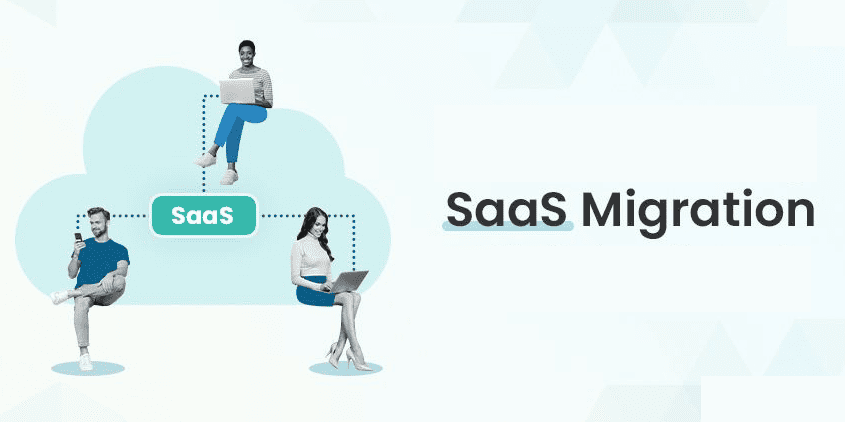
Businesses, big and small, are switching up their game. They’re considering replacing their old-school ERP software, which they use to manage their business, with SaaS applications or adding these new apps to their existing system. SaaS apps are a big deal because they cover everything from customer service programs (like CRM systems) to the nitty-gritty stuff like finance and accounting, IT management, and even unique apps for specific industries. But figuring out how to make this switch to SaaS smoothly is a tricky puzzle for many tech bosses.

If you are looking for software to manage your projects, consider AceProject. This software is not based on the number of users, which can save you a lot of money.
So, why is everyone jumping on the SaaS bandwagon?
Four major trends are pushing this change:
- Money Talks: Businesses are looking hard at where they spend their cash. They want to ensure they’re investing in what they’re good at and not wasting resources.
- Global Competition Heats Up: Thanks to globalization, it’s easier for companies worldwide to jump into new markets, which means more competition and less customer loyalty than before.
- Work From Anywhere: Today’s workplaces are everywhere, literally. People are working remotely, tech-savvy, and need to get to information fast, no matter where they are.
- Old Tech Can’t Keep Up: The traditional, old-school software businesses have been using isn’t cut out to handle all these new challenges.
So, there you have it. Businesses are moving to SaaS to keep up with the times, save money, tackle global competition, meet the needs of modern workers, and upgrade from outdated tech.
Starting the Switch to SaaS
Starting the switch to SaaS (which is like the cool, new way for businesses to use software over the internet) can be a bit like planning a big road trip without a map. Old ways of using business software just aren’t cutting it anymore. This means tech leaders need a solid plan for moving to SaaS. They’re stuck with outdated software that’s not flexible or easy to use, and it’s holding them back from being all modern and digital.
But, making a clear plan for this SaaS journey is tough. They must juggle stuff with their old software needs, like making custom changes and ensuring customers get a personal touch. While figuring out their game plan, they should avoid two big no-nos:
- Don’t Try to Make Everything the Same Everywhere: It’s like trying to use one size fits all – it might save money, but will customers be excellent waiting around while you set it all up? It takes a long time to figure out what every part of the company needs and create one solution that works for everyone. Plus, sometimes, different parts of the company must do their own thing for their customers.
- Watch Out for a Mess of Different Apps: If they break up the SaaS change into many smaller projects to speed things up, it can become a jumbled mess. When apps don’t work well together, it can slow things down and mess up the info that customers see. Also, if every department picks its software without good advice, it might choose stuff that’s not the best for the whole company, which can be risky.
So, in short, when businesses start moving to SaaS, they need to be smart about planning and avoid trying to make everything the same or letting every department do its own thing without a good plan.
When do businesses decide to switch to SaaS?
When businesses decide to switch to SaaS (which is like upgrading their software to a cooler, online version), they have to think about what their customers need first. The plan for moving to SaaS should be fast and reliable, let different parts of the company do their own thing, and be standard when needed. They should ask themselves two big questions about their current software:
- How Fast Do I Need to Change Things Up? Kick off the switch to SaaS by determining which software needs an update. The goal is to fix the urgent stuff quickly, not to find a perfect solution that takes forever. Sometimes, it might be wiser to add a unique fix to what you already have instead of changing the whole thing.
- Do My Customers Prefer Custom or One-size-fits-all solutions? Making everything the same across the board might not be the best move if it means ditching many apps already doing a good job. Go for the one-size-fits-all route only when you know your customers want a consistent experience, especially when dealing with different parts of your company.
So, the big takeaway? When switching to SaaS, businesses need to focus on what their customers need, act fast, and decide whether to go custom or standard, depending on the situation.
When are tech leaders planning to switch to SaaS?
When tech leaders are planning to switch to SaaS (which is like updating their software to the latest online style), they need a game plan that’s both fast and smart. They have to create a SaaS changeover roadmap that simplifies things, speeds up business, and meets the company’s and customers’ unique needs. Here’s the game plan:
- Focus on What Needs a Quick Fix: Go for SaaS apps when you need to give your customers a smooth and consistent experience. These apps are excellent because they’re easy to set up and work well with what the company already has. Don’t get stuck looking for the perfect app; pick one that’s quick to start and does what you need.
- Deciding Between One Source or Many: If the software you’re using now is pretty good and you’re not in a rush, look for a complete package that covers many different things and can be introduced bit by bit across the company. But, if other parts of your company have very different needs, like different customer types or locations, it’s better to look at many options and pick SaaS apps that fit each part’s specific rules and demands.
- Let Each Part of the Company Pick What They Need: Help them decide, but don’t boss them around. This way, you won’t slow things down. Just make sure they’re really checking out the options before they choose.
Once you have your SaaS changeover roadmap ready, kick things off with a quick success that helps your customers. Find something that needs to get better, is key to keeping your customers happy, won’t get too much pushback, and has a few SaaS options ready to go.
Daniel Raymond, a project manager with over 20 years of experience, is the former CEO of a successful software company called Websystems. With a strong background in managing complex projects, he applied his expertise to develop AceProject.com and Bridge24.com, innovative project management tools designed to streamline processes and improve productivity. Throughout his career, Daniel has consistently demonstrated a commitment to excellence and a passion for empowering teams to achieve their goals.